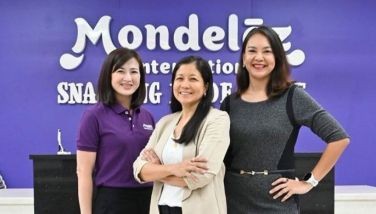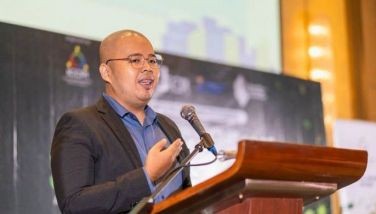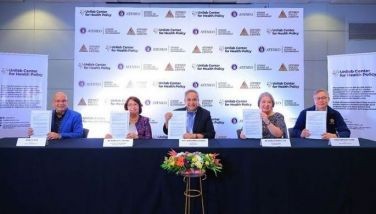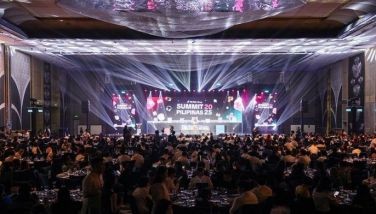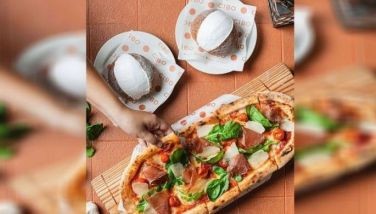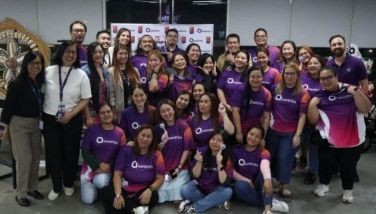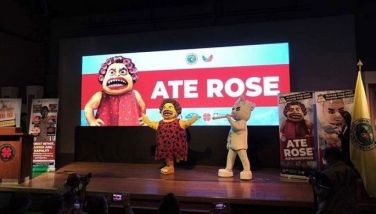Southern exposure
November 4, 2005 | 12:00am
 Manila’s residents like to think of the metropolis as an island, its streets teeming with the best kind of people the country has to offer – the brightest, the prettiest, the richest, the most fashionable. Everything and everyone else outside is simply gray haze. So confident are we of our own superiority that whenever we meet someone of promising talent from another region it is always with great surprise. People come to Manila to become great; they do not foster their talents elsewhere – at least that is our conceit.
Manila’s residents like to think of the metropolis as an island, its streets teeming with the best kind of people the country has to offer – the brightest, the prettiest, the richest, the most fashionable. Everything and everyone else outside is simply gray haze. So confident are we of our own superiority that whenever we meet someone of promising talent from another region it is always with great surprise. People come to Manila to become great; they do not foster their talents elsewhere – at least that is our conceit.
But as regional fashion shows and expos have been showing us of late, there is more to the Philippines than Manila. Take Davao, for example, with its blossoming fashion industry, fed by small textile businesses that create beautiful indigenous materials. Born and bred Davao designers make a living molding structures out of these wonderfully ornate fabrics.
Dodgie Batu, a registered nurse who made the shift to fashion in 1985, considers the materials native to the city of Davao a platform for distinction. "Our local textiles aren’t the most important part of our design, but they play a big part in maintaining our identity."
Unfazed by the autocratic hold of the Manila fashion scene, the people of Davao are slowly forging an identity that supercedes actual materials but, instead, embraces the various cultures and religions that populate the city. It’s an identity that’s been formed with the assistance of the Barba brothers, siblings who began their auspicious careers by not catering to western trends, but instead forming collections that looked distinctly Filipino, yet unlike anything most of us had ever seen.
Popoy, the older of the Barba siblings, began designing about 20 years ago, creating, as most designers do at the start of their careers, dresses for classmates and friends. He trained under his aunt Mafe Ayala, the owner of Krisalis, as the label’s in-house designer, learning proper techniques in construction. Brother Aztec, meanwhile, was encouraged to join after seeing his brother succeed in a field that more often than not vilifies rather than lauds newcomers. A fine arts major, Aztec currently heads the Fashion Designers Guild of Davao, a group that organizes fashion shows both in Davao and Manila.
The brothers and Batu have formed a sort of fashion cabal that seems keen on not only utilizing ethnic materials, but reimagining the latest fashions through their slightly off-kilter lens. An example: a jacket by Popoy, cut like a bolero, is stylized with beads, made from cogon grass and bamboo, done in triangular patterns along the edge, its collar upturned and embellished with more beads inside, the wide circular embellishments done in fiesta-themed accents giving relief to the jacket’s shiny black material. All the materials, by the way, come from the Bilaan tribe of South Cotabato.
It’s not exactly something you see at the mall. Appropriating cultural concepts shouldn’t be new to fashion – after all, designers find inspiration in the oldest or most obscure of references. But rarely has it been fashionable to make use of pieces so patently Filipino.
These designers have captured their city’s zeitgeist, a combination of regional pride and modern thinking. Marking their designs is an unapologetic attraction to their local history and culture. Each piece encapsulates the aesthetic intersection of culture and style, culling references as diverse as tribal embellishments and updated Victorian corsetry.
"Not that I want the clothes to be costumey," explains Dodgie. "I like to use local fabrics in designs that have universal appeal." This explains his charmingly playful collection, done in a gorgeous tapestry of color. "The clothes project my love for a woman’s body, how the fabric blends with her curves. I have bubble skirts and pleated skirts with waist-skimming vests over lace tops." Inspired by Victorian ladies with their cinched silhouettes, Dodgie plays with color and shape, offering a bubble skirt in orange contrasted with a tight vest in purple. "I combined contemporary materials with Mindanao lace and woven textiles and Maguindanao cloth." The schoolgirl look is taken to the south with Dodgie’s high-waist pleated skirt and puff-sleeved, waist-baring blouse in the same bright purple material. It’s a wearable set that makes the fabric shine that much brightly. Dodgie rightly puts the focus on regional materials. It’s a skillful hand and knowing eye that manages to combine something uniquely Davao with something as universal as a coquette.
Mining the same repository of ethnic references, Aztec takes a different route, instead imbuing stiffly-constructed dresses with silhouettes that owe a sculptural debt to tribal costumes and accoutrements as well as regal garments worn by great historical figures like Cleopatra. Star Wars’ Queen Amidala also seems to have a hand in it. "I tried to give hand-woven fabrics from Cotabato a fresh look," says Aztec, "not like the typical malong costume you always see in bazaars and exhibits." The black and gray textured woven fabric adds a surreal allure to his collection. "It’s not like purchasing a piece from a department store," he adds, "rather it’s like an artist’s work."
Popoy, meanwhile, combined a mod-inspired aesthetic with native materials. Painted in stripes of brown, white and black, the skirt is done in abaca fiber or T’nalak, Mindanao silk that’s been treated so that the fabric doesn’t feel rough against the skin. A pleated top with asymmetrical hem is cinched to the bust with a black body strap embellished with bells. While it sounds strange, the melodic piece only underscores the wonderfully quirky elements of Philippine culture. The body strap actually works just as well over a plain white T-shirt and jeans as it does over a dramatic silky gown. It’s a chic accessory that’s so unusual, it’s bound to draw (positive) attention anywhere.
Stamped with a distinctly Davao style, these piece mark a shift for these designers. Though their influences are clearly regional and homegrown, there’s nothing small town about them. Maybe this time, Manila will sit up and take notice.
BrandSpace Articles
<
>







